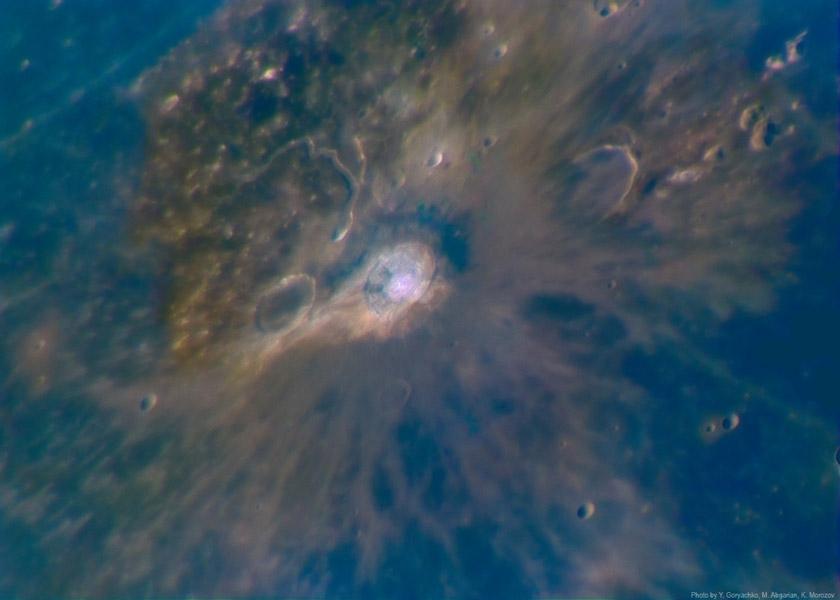January 26, 2018
Aristarchian Colors
Originally published August 5, 2008

image by Mikhail Abgarian, Yuri Goryachko, & Konstantin Morozov, Minsk, Belarus
Many imagers of the Moon simply saturate the faint colors registered with color CCD cameras, but the Minsk Miracle Imagers do it the old fashioned way. They composite monochrome videos taken with RGB filters and then enhance the colors with Photoshop. The result is a richly colored Aristarchus Plateau with patterns to ponder. The Plateau itself has a distinctive yellow-green hue due to the pyroclastic materials erupted from the Cobra Head, the source of Schröter's Valley. The Valley is also thought to be a source for many of the surrounding mare lava, but it is odd that the floor of the Valley is not the same green-blue as the erupted lavas. The rays from Aristarchus are a study in themselves. They are, in this rendition, a very slightly reddish gray that represents the rocks excavated from beneath the crater. A distinctive yellowish deposit is south of the crater and tails off to the west. I have suggested before that this looks like a swirl but it does not have an associated magnetic field anomaly. The rays of Aristarchus are not symmetrically distributed - there are few to the northwest over the ash-covered Plateau. Did Aristarchus result from an oblique impact, or does the ray asymmetry have anything to do with the crater forming right on the edge of the Plateau so that only the mare lavas contributed to the rays?
Chuck Wood
Technical Details
25 July, 2008, 02:33UT. Maksutov-Cassegrain Santel D=230mm F=3000mm, barlow 2x + Astronomik RGB TYP II filters + Unibrain Fire-i 702 CCD b/w camera,(IEEE-1394, 1388x1040, 10fps, 12bit); Processing in Registax & Maxim DL, postprocessing in Photoshop CS3. LRGB. Seeing 6/10, Trans 5/5.
Related Links
Rükl plate 18
Astronominsk website
Yesterday's LPOD: Especially Worthy of Scrutiny
Tomorrow's LPOD: Einstein Times Two
COMMENTS?
Register, Log in, and join in the comments.



